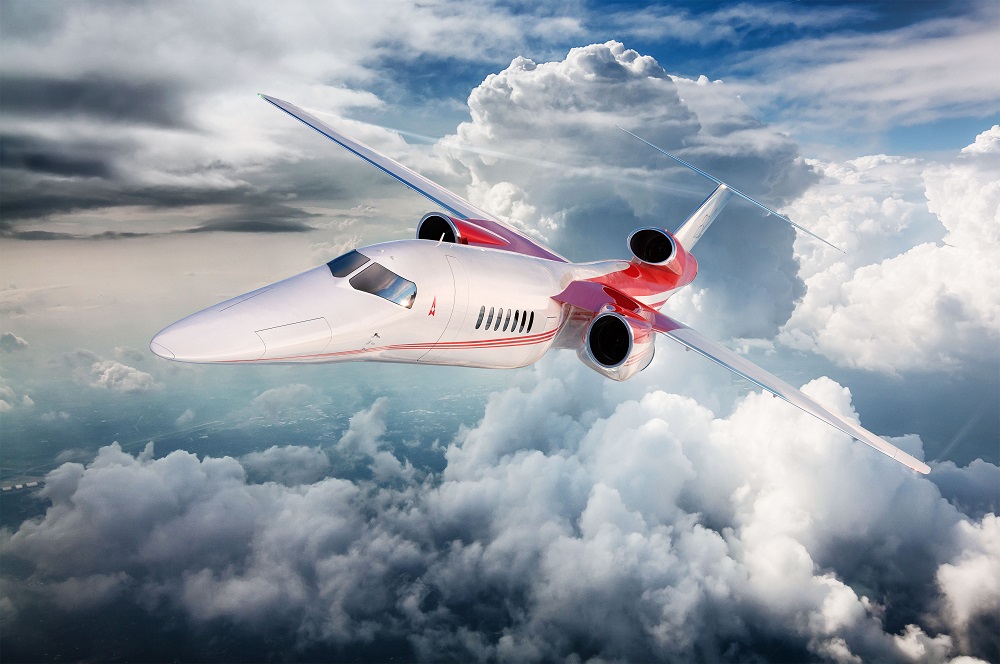Aerion Supersonic says it is on track to see its first business jet hurtle across the Atlantic faster than the speed of sound in 2023 — 20 years after the last flight of the Concorde.
The company, which is working in collaboration with Lockheed Martin and GE Aviation, announced Tuesday it had concluded the conceptual design phase of its AS2 supersonic business jet and started preliminary design.
The new phase follows the launch in 2017 of a formal process to design and evaluate a final engine configuration.
Aerion expects its 12-passenger business jet to cruise at Mach 1.4 and save travelers as much as three hours across the Atlantic and five hours across the Pacific.
It hopes to have it certified by 2025.
“We’re on track to fly in 2023, and before that year is out to cross the Atlantic at supersonic speed, which will be the first supersonic crossing since the Concorde’s retirement 20 years earlier,’’ Aerion chief executive Tom Vice said.
“Aerion and our AS2 industry team, comprised of Lockheed Martin, GE Aviation, and Honeywell, have solved many of the tremendous challenges in creating a supersonic renaissance.
“We’ve overcome some huge technical hurdles and we’re confident we’ll meet Stage 5 takeoff and landing noise requirements. We’ve made strides in structures and systems.”

GE Aviation also announced it had completed the initial design of the first supersonic engine purpose-built for business jets and the first civil supersonic engine in half a century.
GE said its Affinity turbofan was optimized with proven technology for supersonic flight and timed to meet the Aerion AS2 launch.
The Affinity is a new class of medium bypass ratio engines the company says will provide “exceptional and balanced performance across supersonic and subsonic flights”.
It integrates what GE describes as a unique blend of proven military supersonic experience, commercial reliability and advanced business jet engine technologies.
A twin-shaft, twin-fan turbofan, it is designed to enable efficient supersonic flight over water and efficient subsonic flight over land.
It is designed to meet stringent Stage 5 subsonic noise requirements, beat current emissions standards and has a high-altitude service ceiling of 60,000 ft.
“In the last 50 years, business aircraft speeds have increased by less than 10 percent,” said GE vice president Brad Mottier.
“Instead of going faster, cabins have increased in size and become more comfortable – and range has become longer.
“With large, comfortable cabin, long-range aircraft in the marketplace, the next step is speed . . . made possible with GE’s Affinity.”
Aerion has not ruled out making a small commercial airliner in the longer term.
“A next generation beyond the AS2, based on a further adaptation of current engine technology, could take us from the AS2’s speed of Mach 1.4 to Mach 1.6, and could serve as a larger cabin, longer-range business jet, and small airliner,’’ Vice said.
“Entirely new engine designs hold the potential to build larger aircraft able to fly at Mach 1.8 and above.
“This evolution will require considerable investment in new technology and will arrive in stages over the next several decades, and Aerion intends to be at the forefront of these developments.”
A number of companies, including US-based Boom Supersonic, are looking at supersonic flight after a long hiatus.
Japan Airlines and Boom last year announced a strategic partnership to bring commercial supersonic travel to passengers with a commitment to 20, 55-passenger supersonic jets.
READ: Japan Airlines commits to boom supersonic aircraft.
The agreement will see JAL provide its knowledge and experience as an airline to support Boom in developing the Mach 2.2 aircraft.
NASA also plans to tackle one of the big problems in supersonic travel: the sonic boom.
The US space agency has awarded a $US247.5 million contract to Lockheed Martin to build from scratch a needle-nosed aircraft that could happily grace any chapter of the Star Wars franchise.
The 94-foot long plane is expected to start test flights in 2021 and fly at a cruising altitude of 55,000ft at Mach 1.42, or 940mph (1512kmh), with a top speed of Mach 1.5.
It will use the latest in technologies to reduce the window-shaking sonic boom to a thump equivalent to the noise of car door closing.
























